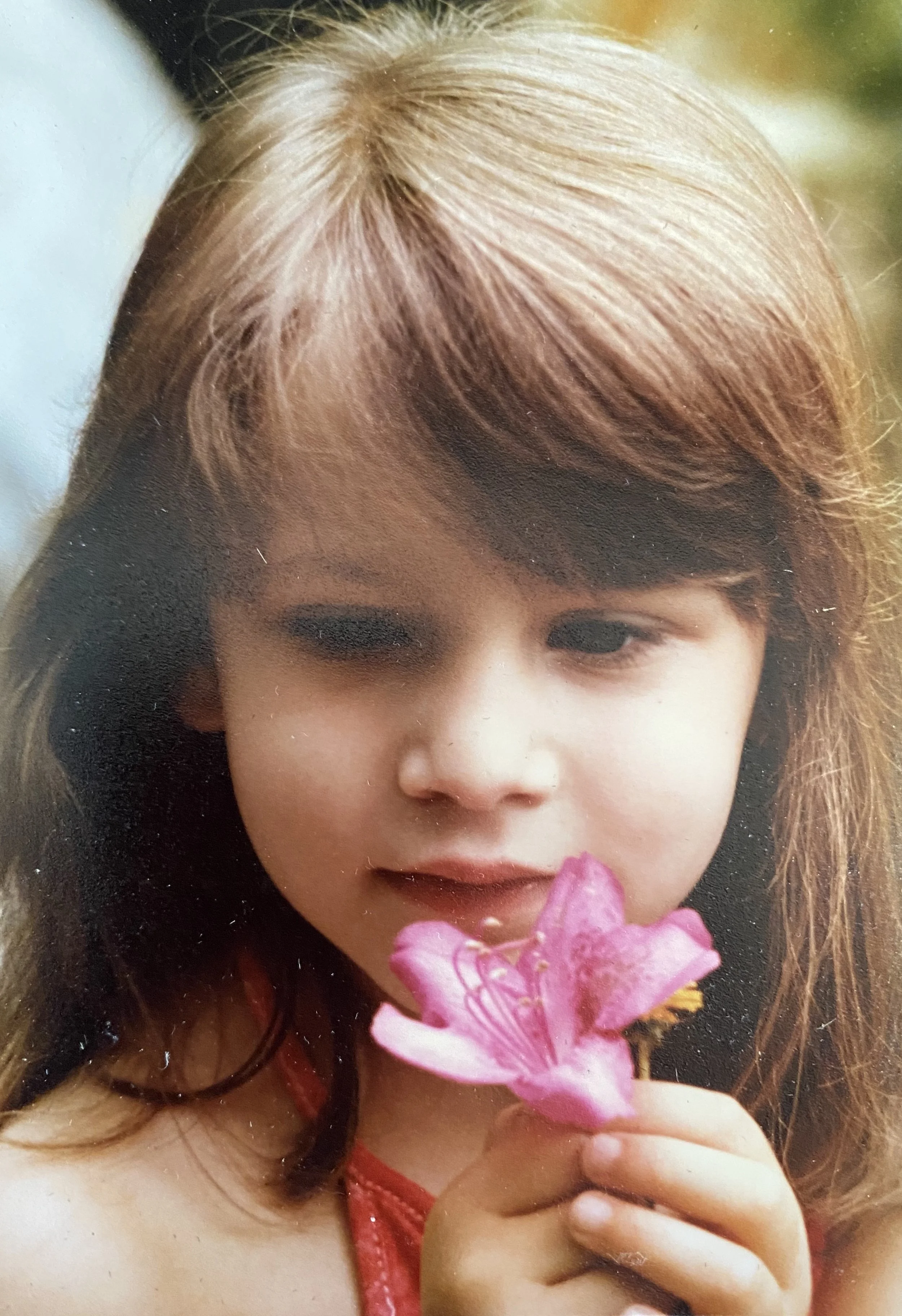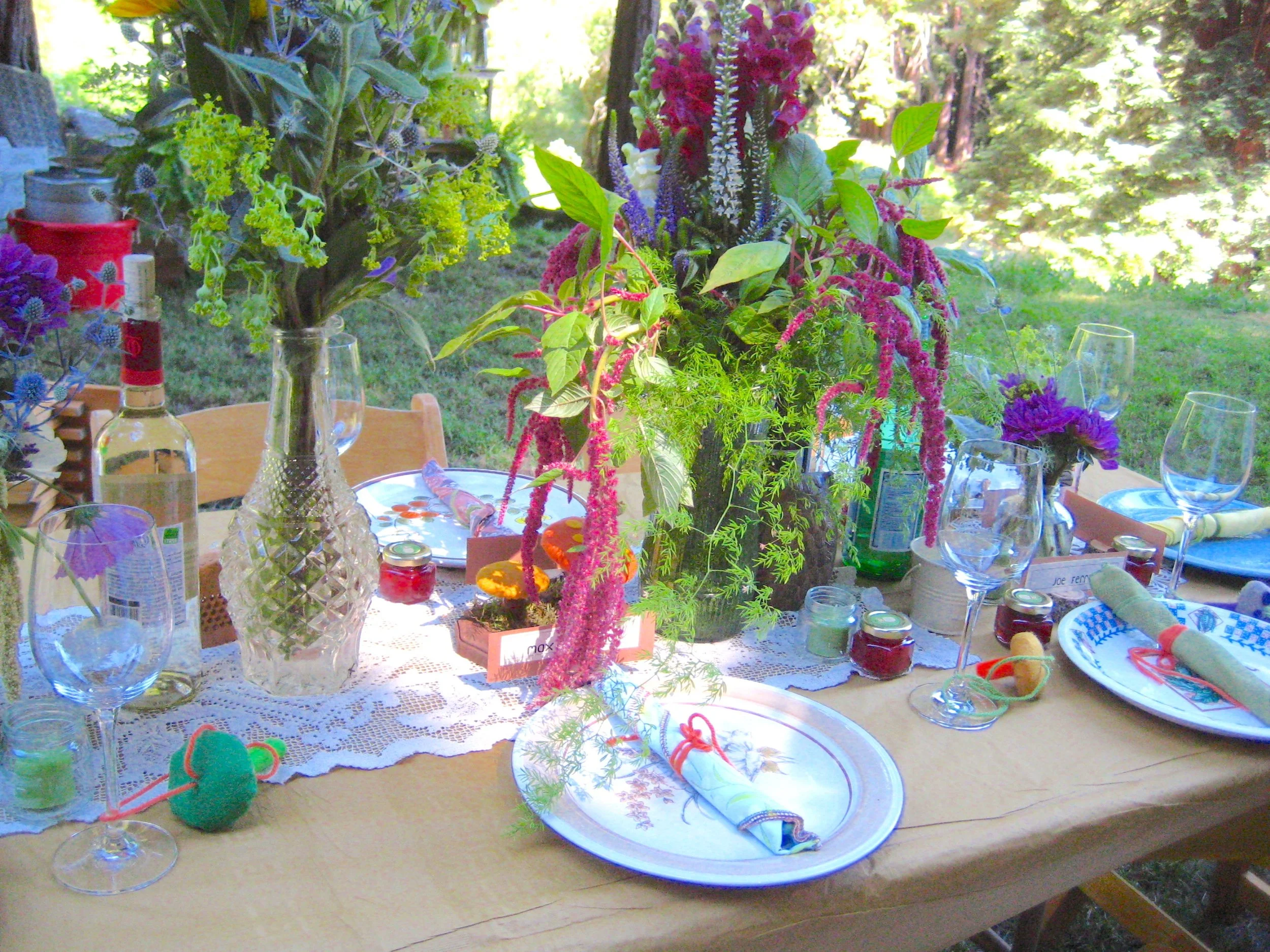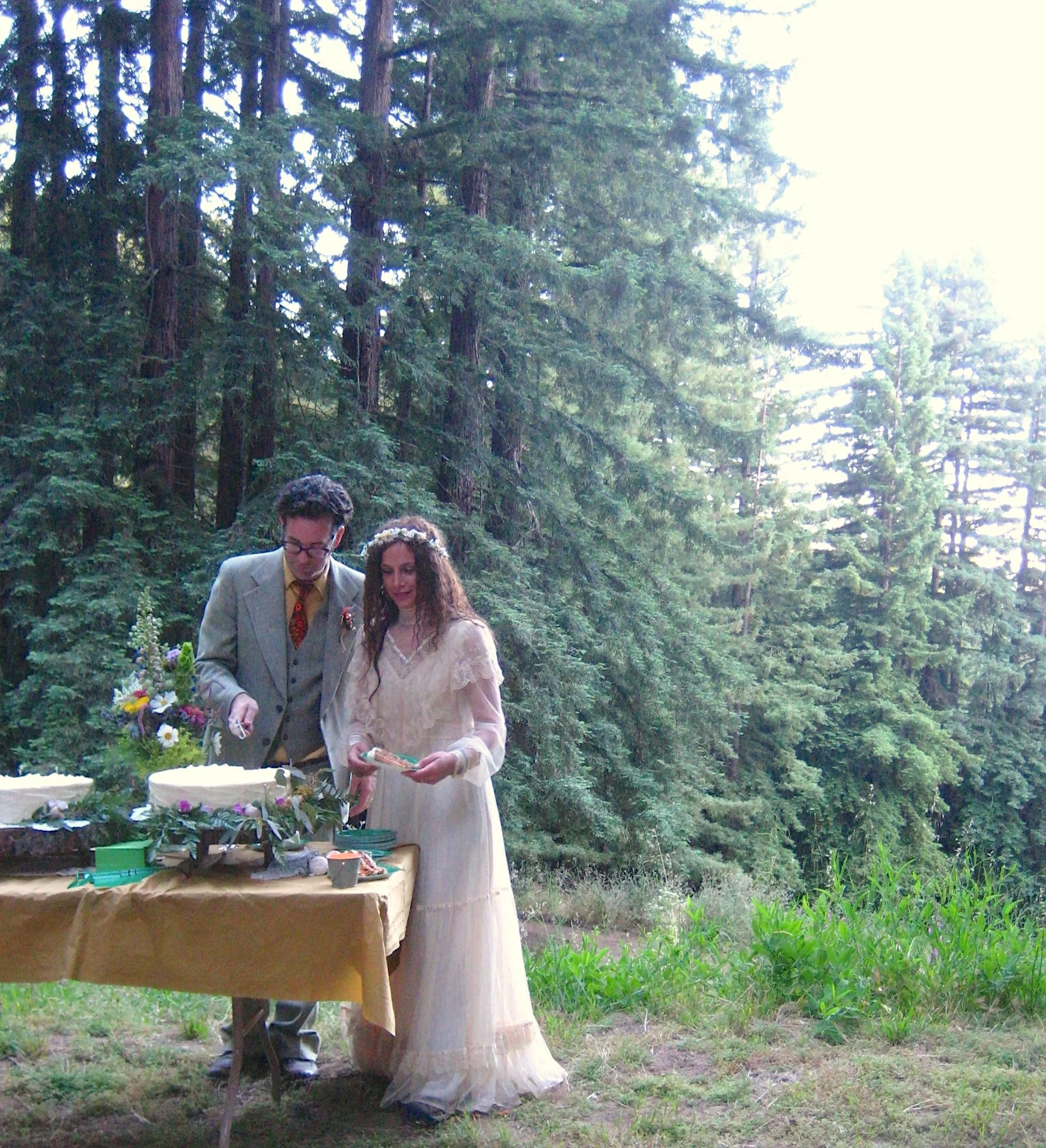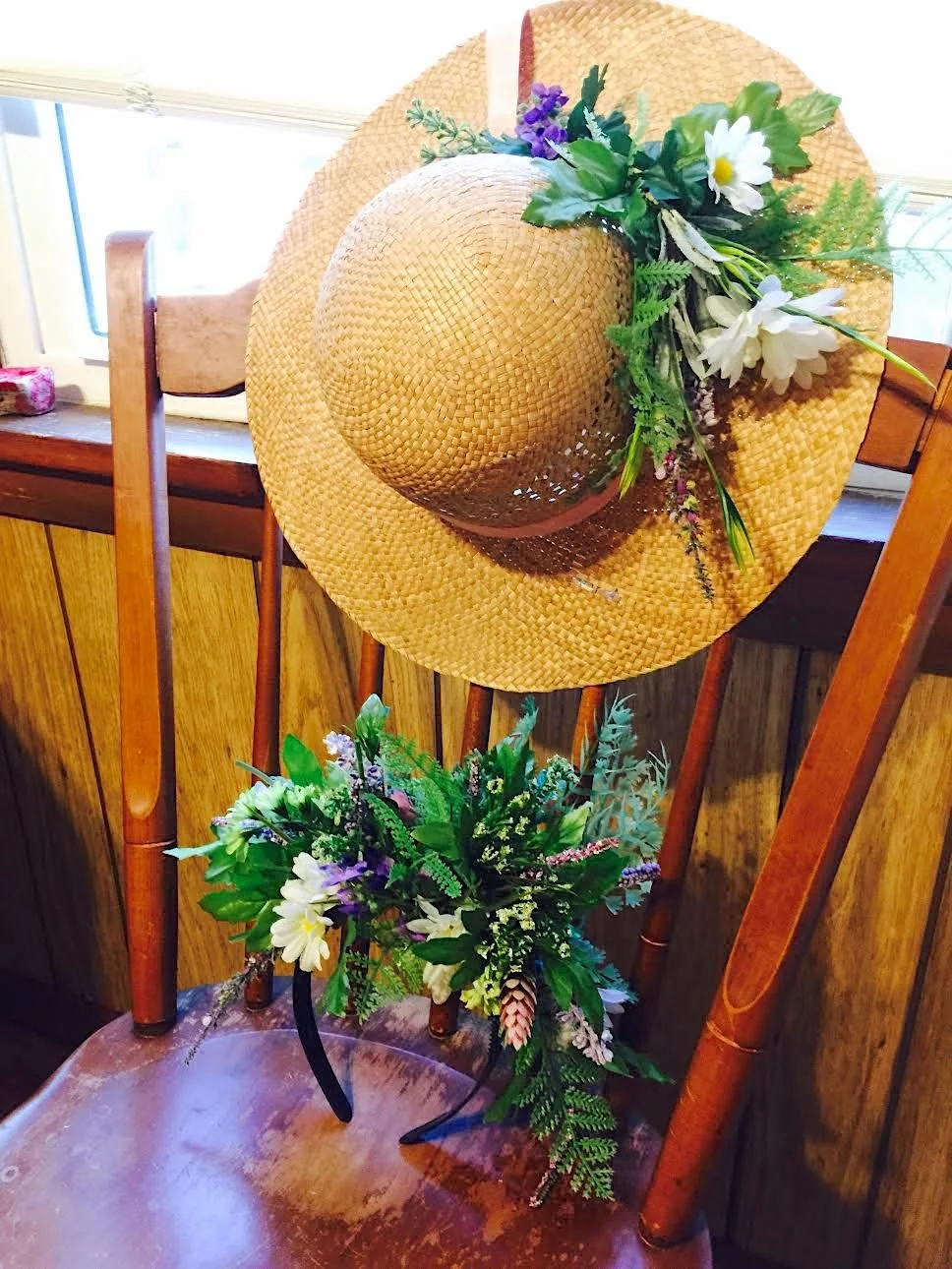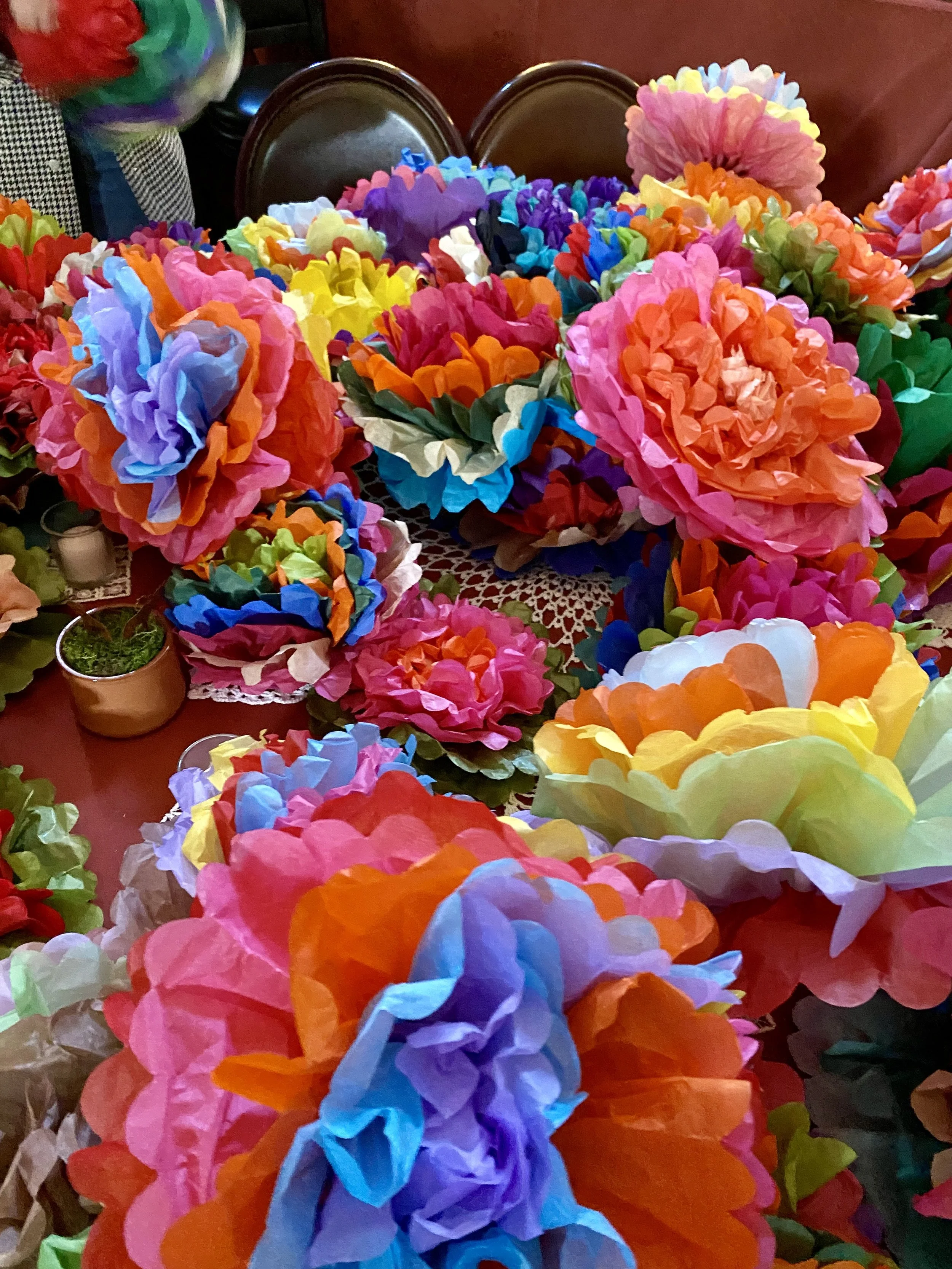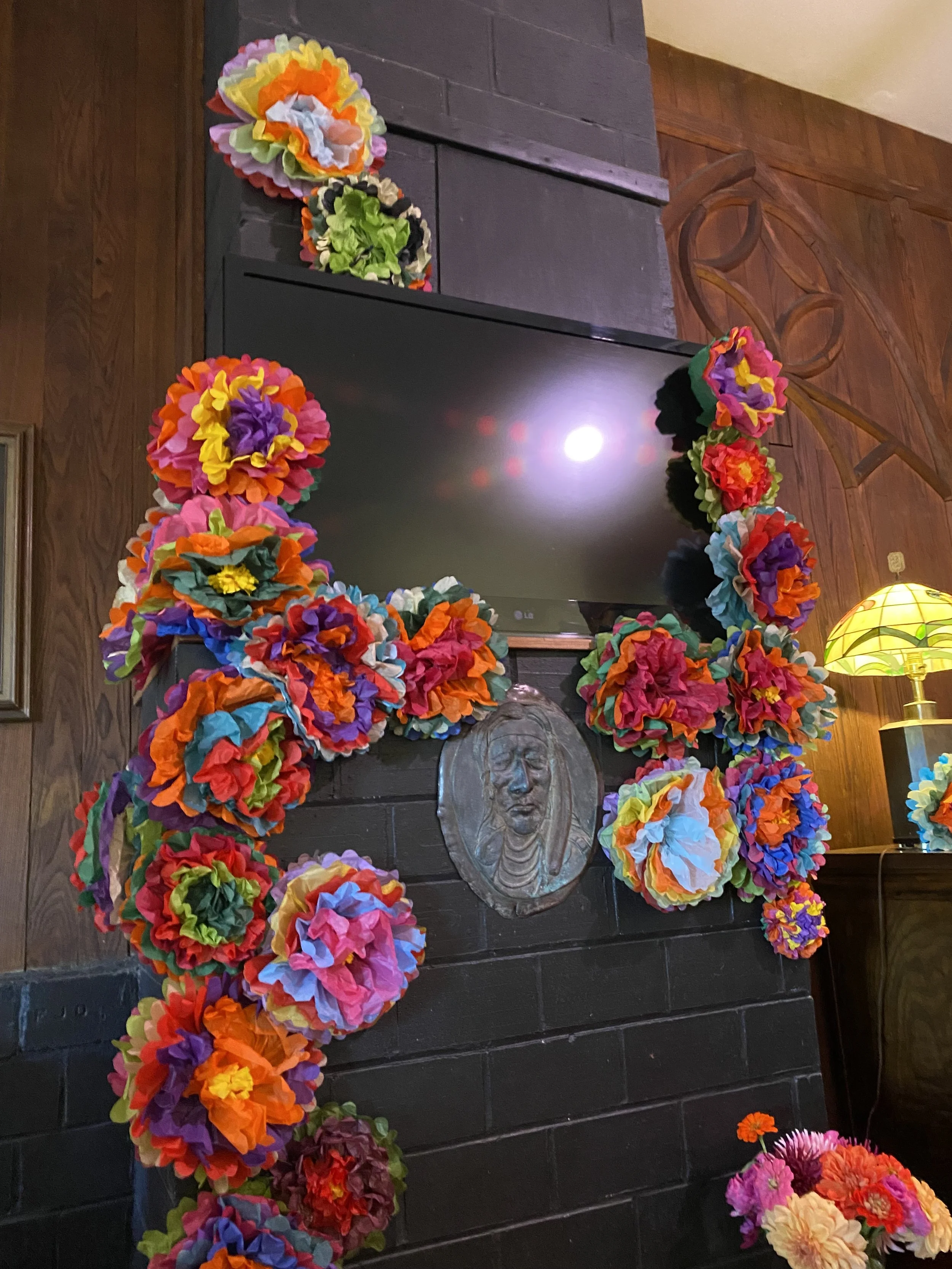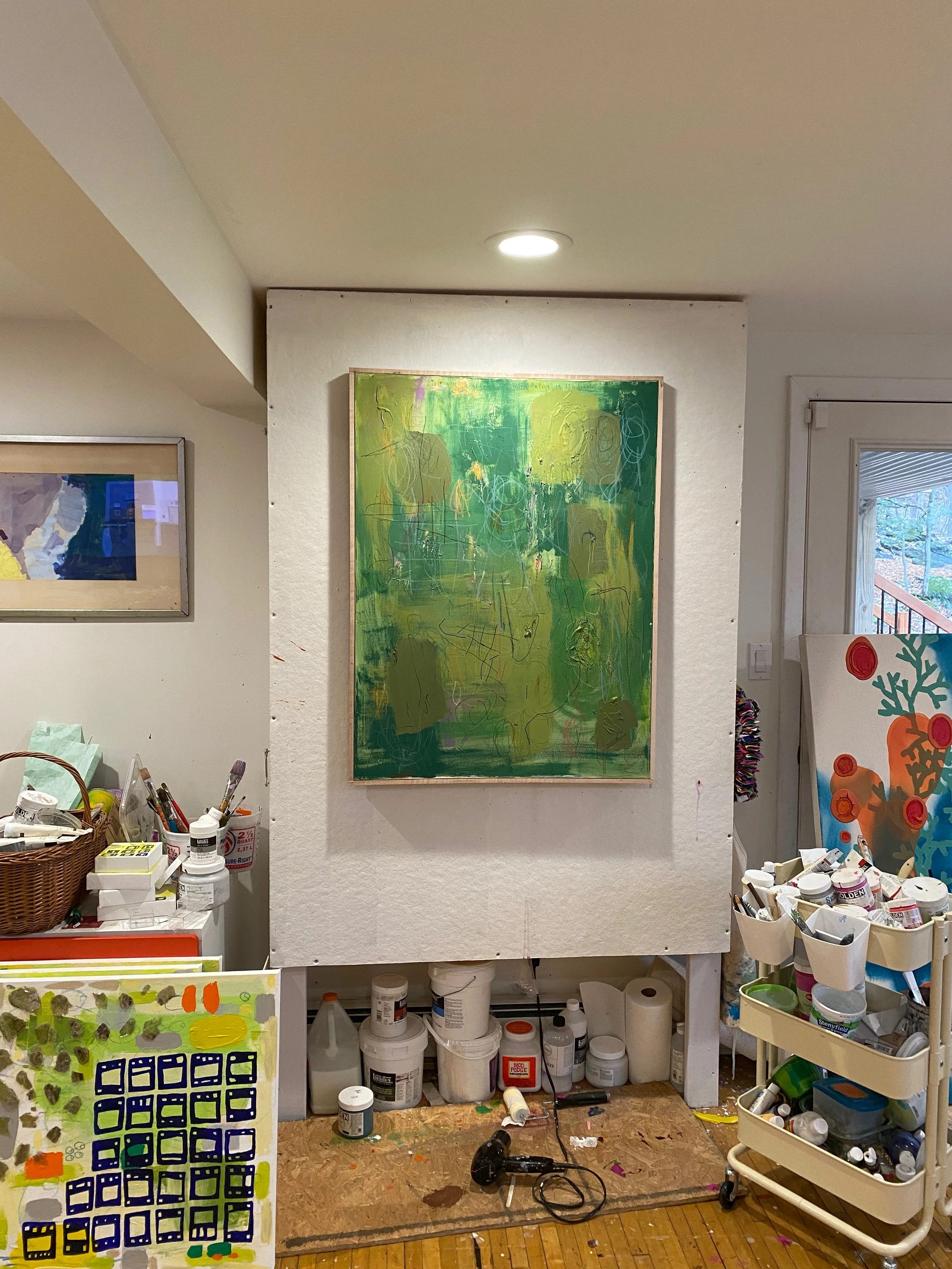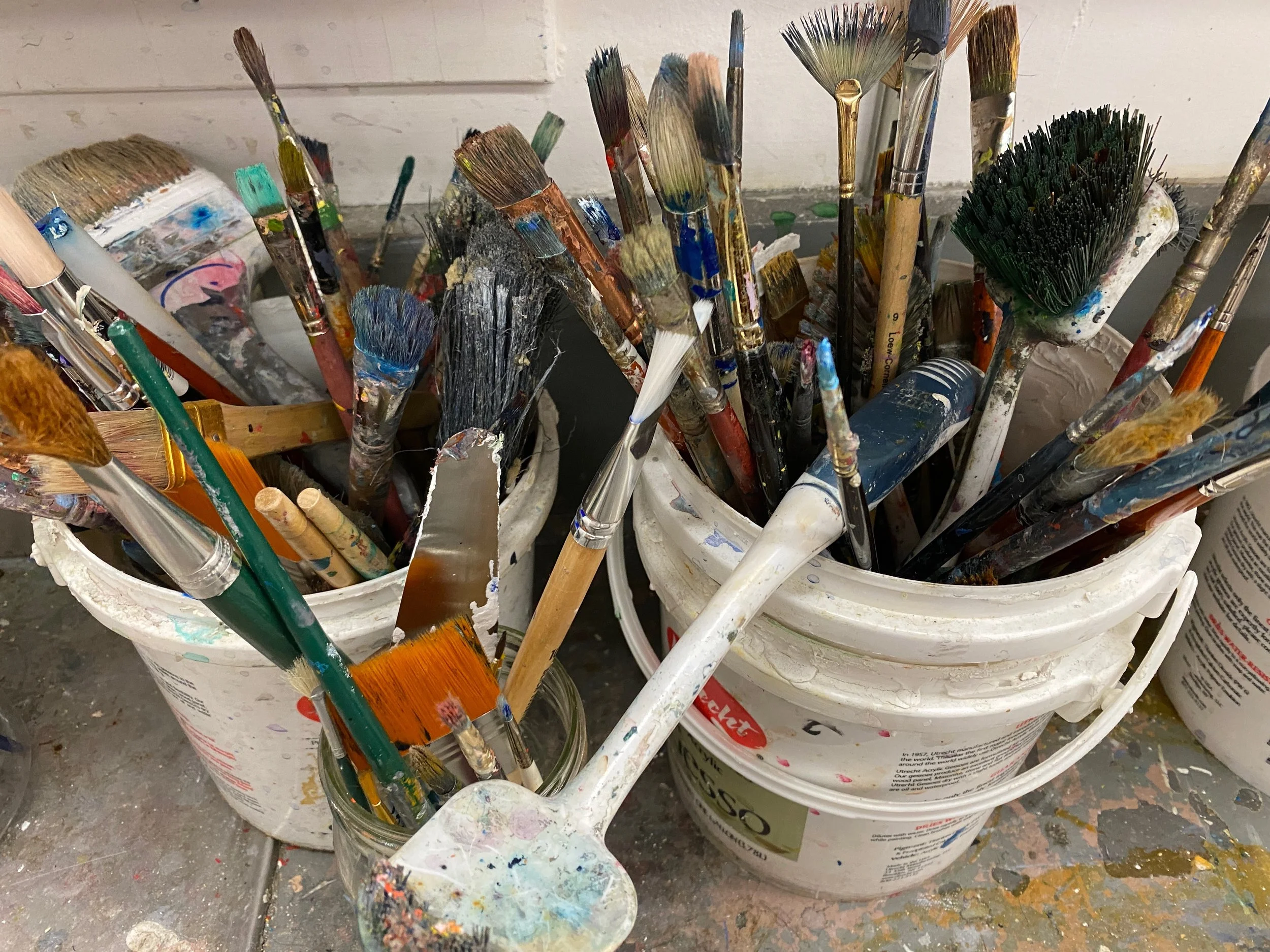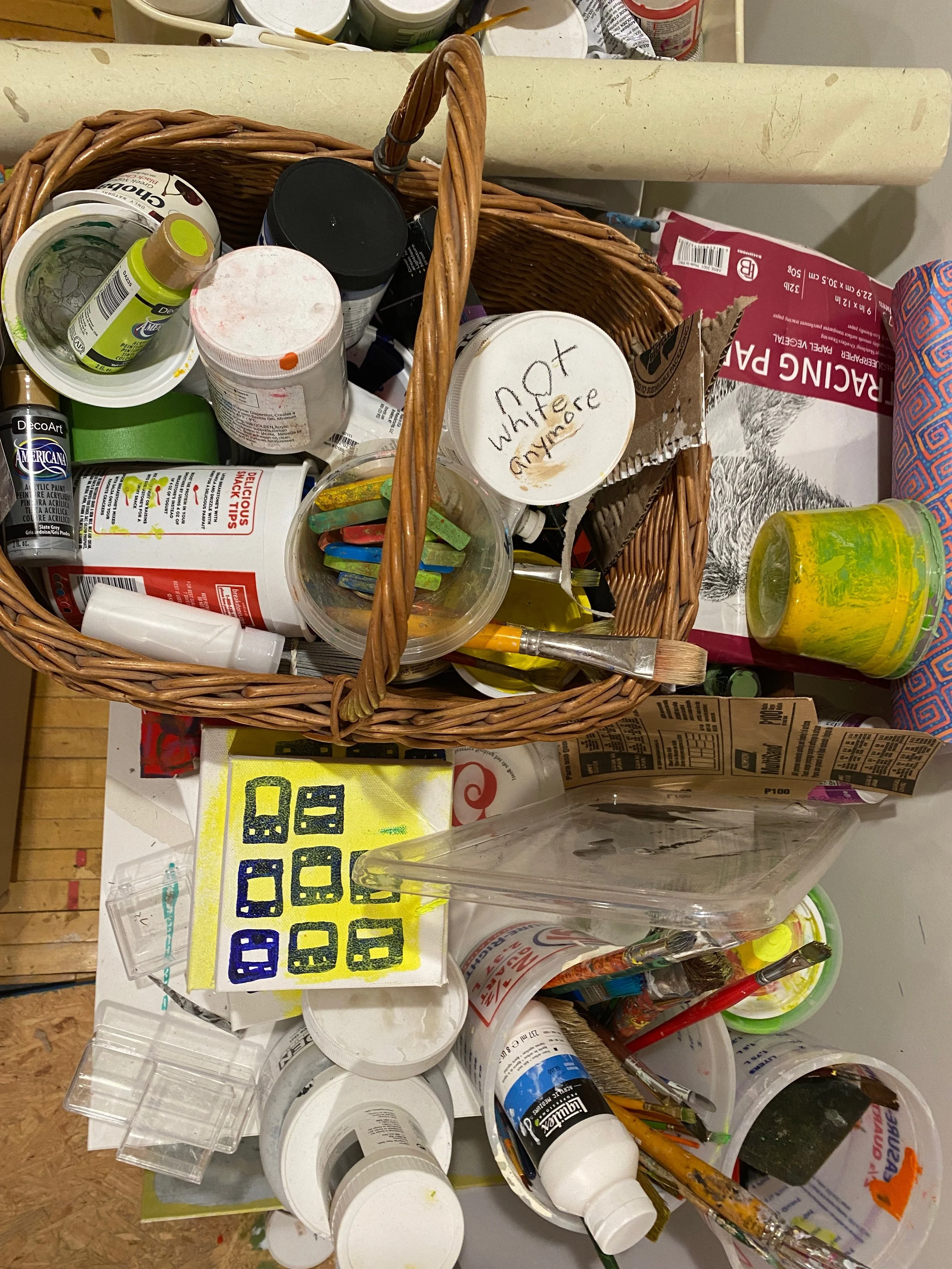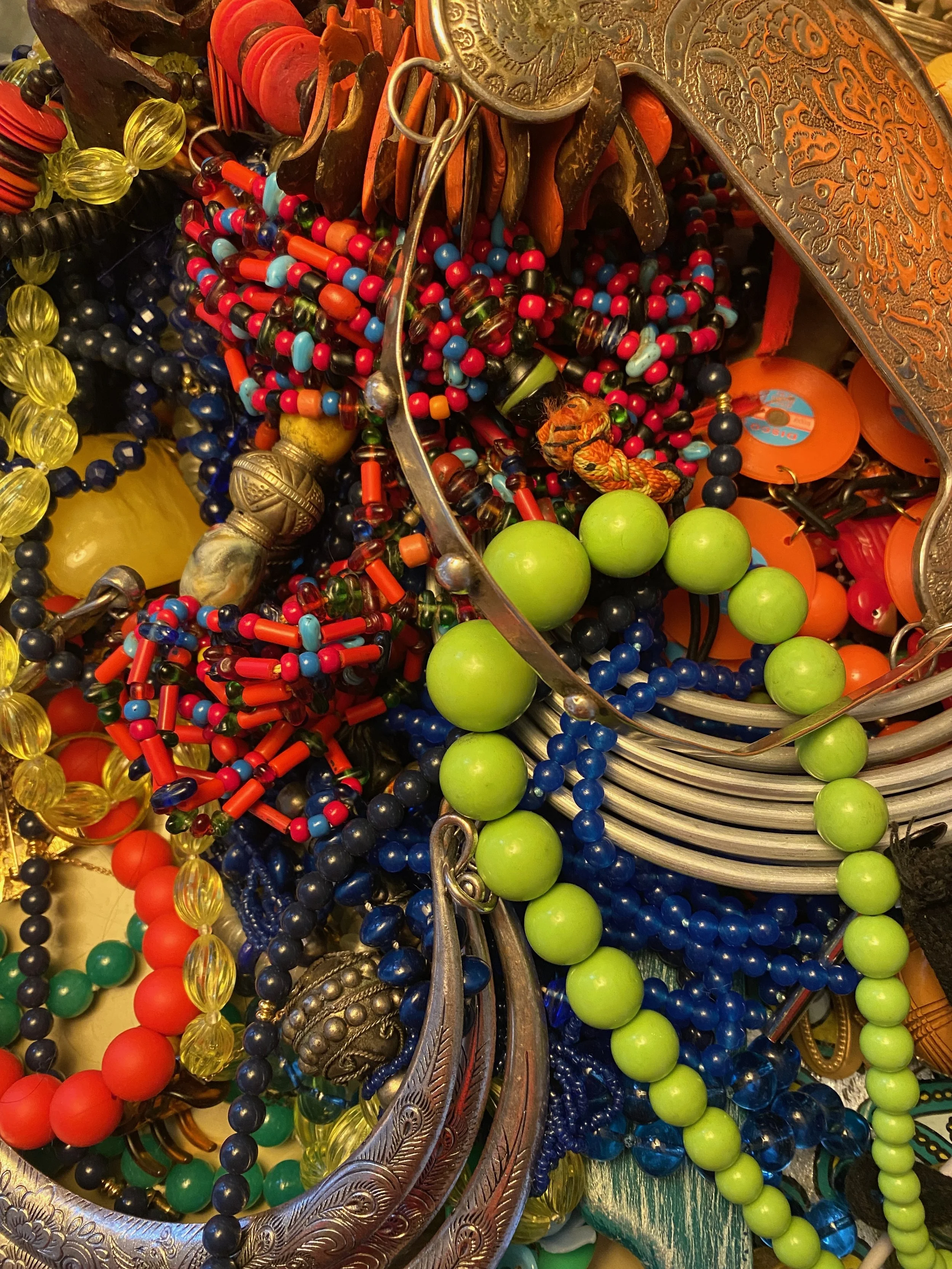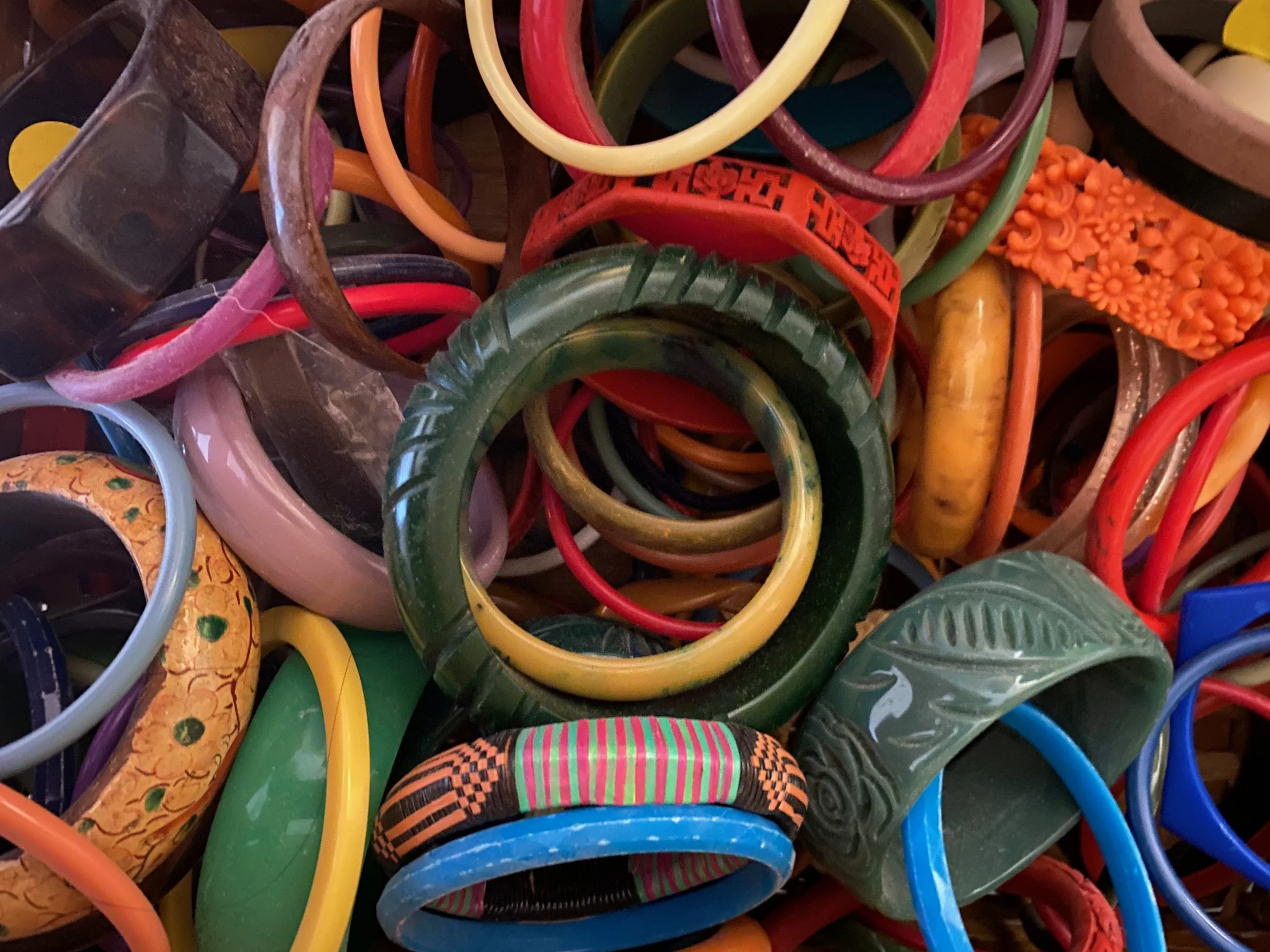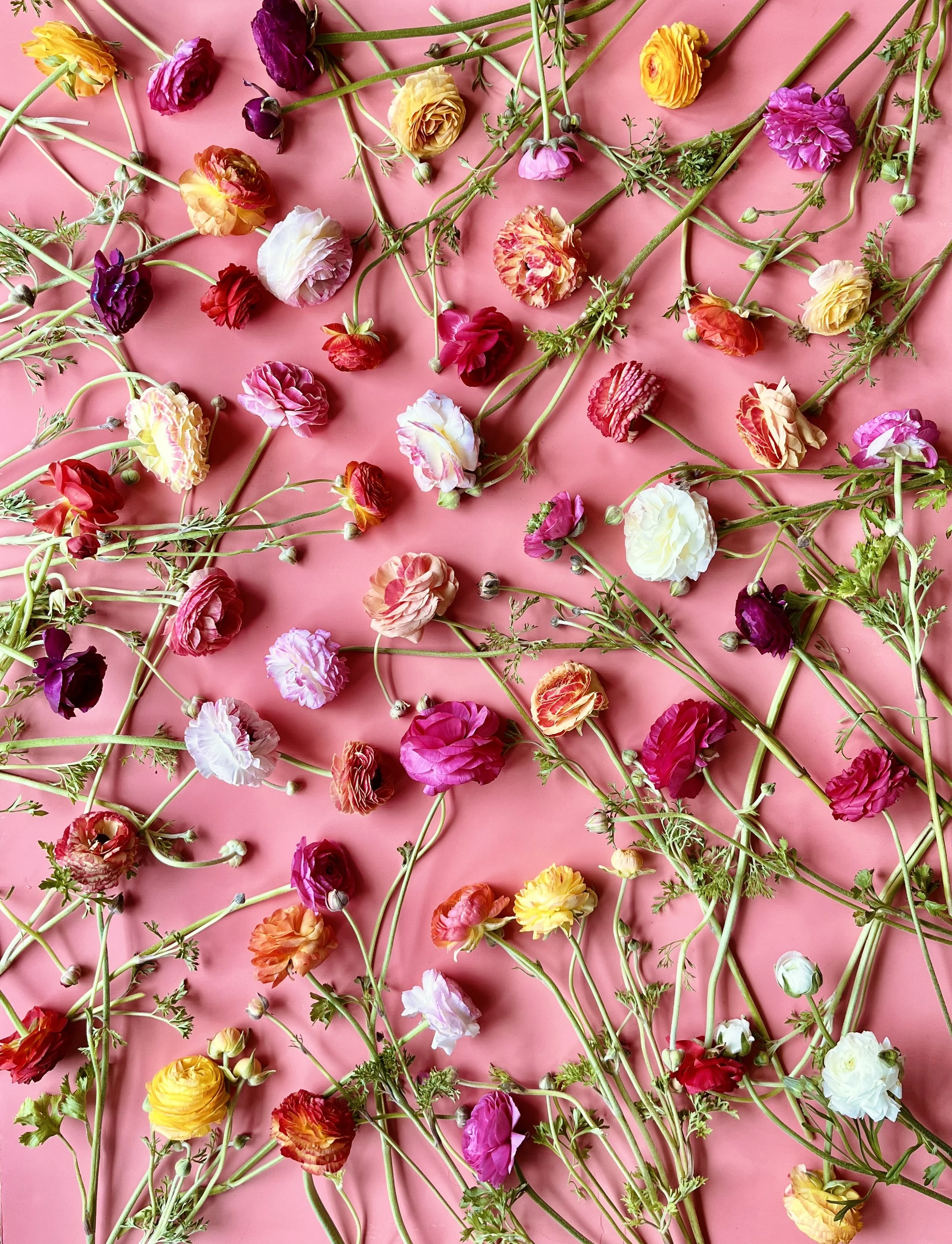Allyson Montana
CREATIVE CONVERSATIONS
Allyson Montana
is a painter and mixed-media artist working in the New York City area. Allyson’s work explores unwritten stories from the archaeological past. As a world without directions, the archaeological record is an open stage for interpretation. The content of Allyson’s work plays with the metaphor of interpretation, narrative, and authorship. Allyson layers media, paint, and other natural materials in her paintings, to deliberately obscure mark-making and meaning. At times she uses symbols from specific excavations in her work and at other times she incorporates her own “field notes” on a subject. Like in the Paleolithic record, layers of information become concealed over time and are easily misinterpreted.
Allyson’s background in art history, ancient history, and East Asian Languages greatly informs her work. She has participated in Fulbright Fellowships to study art history in Japan, India, and Sri Lanka, as well as fellowships in Korea, Taiwan, and China. Allyson has exhibited her large scale, mixed media acrylic paintings in various settings throughout the Northeast.
As a Myers Prize recipient and current Macy Painting Studio Doctoral Fellow at Teachers College, Columbia University, Allyson actively researches painting and art history—and is working on ways to disrupt the Western canon of it. Currently, Allyson lives north of New York City with her family and can most often be found hiking, painting, foraging, making arts & crafts, and celebrating every holiday possible.
Where you can find Allyson
What are your earliest memories involving flowers?
What a great question! As is probably the case for many people, flowers were a presence in my childhood, albeit for me, they were a quiet presence. Flowers appear as secondary players in my drawings, as adornments on my dresses, and tucked behind my ear in faded photographs. Like many children in the 1970s, I pressed flowers in books, made dandelion chains, and made flower “potions” in the listless hours I spent in my yard engrossed in imaginative play.
Flowers are also a spatial and temporal anchor in my memories. Each spring just before my birthday, a large hill on the way to my father’s work nicknamed “Putt’s Hill” would bloom with white and purple crocuses, a signal my birthday loomed near. Of course, crocuses bloomed elsewhere, but my mind could never truly grasp the turning of 5, or 6, or 7, until I had seen Colonel Putnam’s Hill turn vibrantly purple and white. It was as if my birthday couldn’t happen unless the hill exploded with color.
Similarly, the presence of orange daylilies lining nearing all the country roads where I grew up meant “it’s really summer now,” and with that both the excitement of all that summer brings, and on the horizon, the understanding that summers don’t last forever. Daylilies are a symbol that summer is fleeting and that as a child, summer simultaneously seemed endless with hours of complaints that “there’s nothing to do.” How can one flower say so much?
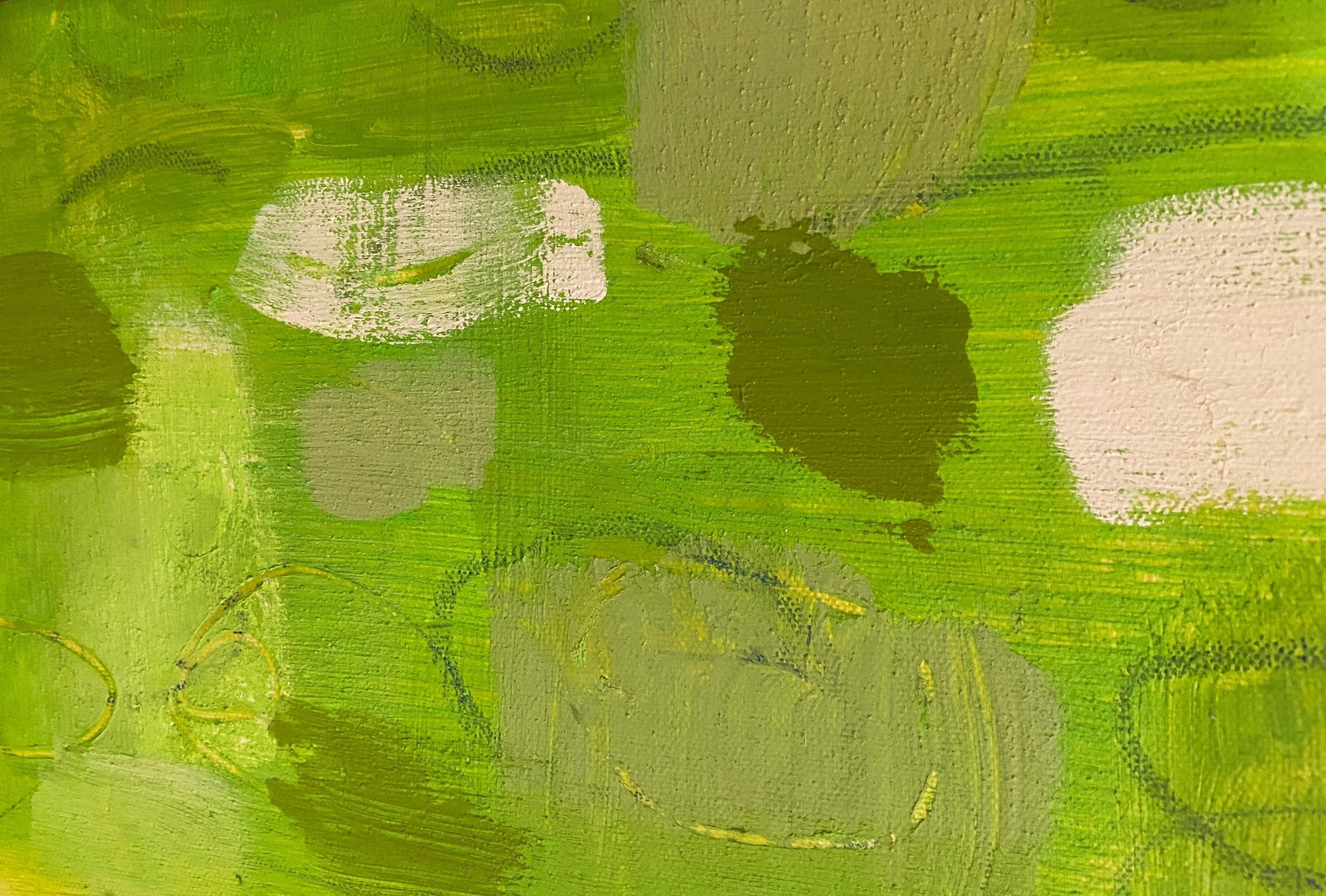
What drives your creativity?
For me, making art has always been about processing information, solving a problem I’m thinking about, or working through an emotion. I’m sure it is the same for most artists. Sometimes I am putting this process out into the world and sometimes this making is deeply personal and private.
What were some of the major points along the trajectory of your design work?
Painting has been a part of my life since college, although I have to say my drive to make things is a lifelong obsession. I say obsession like it is a problem but it is absolutely a part of what makes me tick. Making art, craft, objects—and things—are part of my thinking, problem solving, ideas, and even my yearly calendar. I go to museums, read an interesting article, have an inspiring conversation, or even see or hear something beautiful and I think about creating. My husband is also an artist and we constantly talk about ideas—both good and bad—with one another. We have training in art but a lot of what we do is considered craft.
This is not to say that I always make what I think about, as I’d need many more hours a day to actually do that. But I like to engage in the creative thought process.
Regarding flowers specifically…
I took a floral arranging class and read books on floral arrangement, but it wasn’t until I got a summer job at a florist shop that I actually understood the process. My favorite part about working for a florist was watching people come into the shop (which was actually more like a stand at an indoor market with lots of cut flowers arranged in jars) and immediately smile at all the flowers. Flowers make people smile and the excitement of buying someone a bouquet of flowers makes people giddy.
Many customers wanted a bouquet of flowers but they felt intimidated by all of the choices. I would join them on the other side of the counter and together we would choose the blooms and greens. Afterward, they left feeling as if they had designed the bouquet (they had) and that they had made something special. The process was more personalized compared to grabbing a ready-made bouquet of flowers. “She really likes yellow,” or “let’s make something really bright and bold, just like him.” You would hear people say the most amazing things about the people they were buying flowers for. They would always leave excited to give the flowers to the recipient and I felt like I could almost hear them saying “I picked these out just for you…” when they handed them the bouquet.
After working at the floral shop, I started arranging flowers at parties and for friends’ weddings, mostly because it was a time in my life when I had a ton of weddings to go to! I visited the wholesale flower markets in both San Francisco and Los Angeles and was amazed at the range of floral options, textures, and colors. For my own wedding, I ordered hundreds of dollars of flowers at a wholesale flower farm in Watsonville, California. I definitely overestimated the time and effort it takes to process all those flowers and arrange them when you are the bride! I temporarily forgot I was the bride and assumed I could disappear and just arrange flowers for 24 hours.
In addition to thinking about live flowers, I also started to think about “flower-like” objects, particularly vintage or out-of-fashion accessories such as lapel pins and brooches. I had always loved brooches and had been wearing them for years. I thought, What if I started making boutonnieres that you could wear at a wedding or any special event?
I started by making a set of about twenty boutonnieres for my own wedding. We did not have a wedding party, so I made a set for my immediate family and for close friends who read and performed at our ceremony. I collected Czech glass beaded flowers mounted on wires and mounted small vintage buttons on wire as button “flowers” for the floral aspect of the boutonniere. I added some vintage millinery and a felt backing along with a sturdy jewelry pin to be pinned to a lapel. The boutonnieres added a pop of color to the men’s suits and for most of the wearers became a fun conversation starter. Also, I was glad that I could make these early and focus on the fresh flowers the day before the wedding.
What were the points of inspiration—and some of the constraints—for designing your wedding flowers?
We wanted to go with what was seasonal and native to the Santa Cruz Mountains, where we lived at the time. Each table was named after a native botanical, which also made things fun for our out-of-town guests who’d traveled to be there with us for the weekend. One of the biggest challenges was the sheer prep of it all and trying to keep all of the outdoor arrangements fresh-looking in the June heat, but fortunately nothing was really affected all that much!
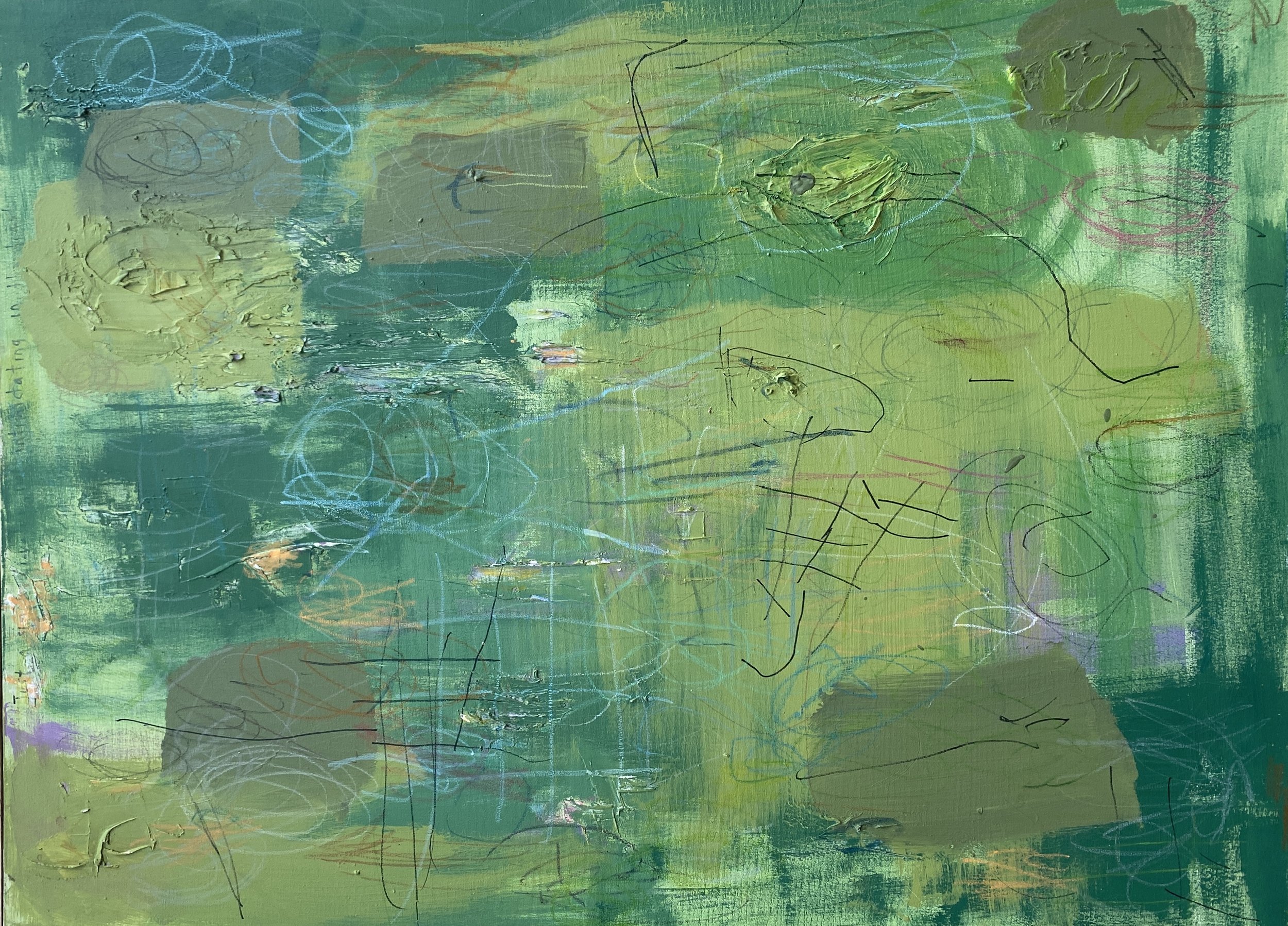
What role do flowers play in your life?
Flowers inspire me to be creative, which in turn brings me happiness. I love fresh-cut flowers for celebrations and entertaining. I also love summer bouquets cut from our perennial garden and the opportunity to display flowers in my weird collection of vintage vases. Finding vintage craft flowers made from various materials like crepe paper, felt, beads, glass, and fabric are also exciting for me because they will inspire me to make new things that I can give to people or wear. Lastly, I love wearing floral patterns from vintage 60s/70s designs to more abstract geometric patterns. I love mixing up bright colored floral patterns in my home and my wardrobe.

Are there personal stories or elements incorporated into your designs?
In general I think it’s hard not to put your personal stamp on your work. When I look at my friends’ floral work, art, and crafting, I can immediately see “the hand of the artist,” and I’m sure it is fairly evident in my work too. I collect and incorporate certain objects and gravitate toward specific colors that I almost always use. I try to take new directions whenever I can, but there are definitely well-worn paths I tend to take.
When I make floral work for others, I try to listen to what they like and hear their stories. For example, I ended up making several boutonniere sets for friends’ weddings or rehearsal dinners. For one close friend in Maine, I incorporated bits of lichen, driftwood, and periwinkle shells from a beach near her home. They were married on a sailboat off the coast and wore the boutonnieres with those bits of driftwood, lichen, and shells with that beach in their view during the ceremony. I also sold a few sets in my Etsy shop in which I incorporated personal items from a bride’s family into the corsages. I even added dried pasta into my parents’ wedding anniversary table settings (I’m Italian!). Long story short, I like to add items that mean something to the wearer, even if only they know the meaning.
“Remember it takes courage
to put your work out there.
Making is brave.”

What’s the best piece of advice you’ve been given that’s helped shape your work?
Recently someone shared with me a great piece of advice which was to “keep trying new things, even when people like your old things.” This advice came up in reference to commercial art, meaning that if one makes a product that others like, one will be stuck making that particular product in repetition. Art isn’t always about pleasing others. Sometimes for the artist, it needs to be about creating.
Tell us about some of your wildest floral creations.
I made miniature “mountain” centerpieces for a friend’s wedding in California. I wanted each centerpiece to be unique, three-dimensional, and interesting from every angle. These “micro-hikes” were actually driftwood and floral foam that I cut into unique shapes and then draped with a combination of soil, pumice, artificial/real mosses, and succulents. Because my friends are mushroom hunters, I dotted the centerpieces with vintage German paper mache and porcelain mushrooms.
Recently for another friend’s wedding, I made 225 tissue paper flowers similar to those made in Mexico. These beautiful and vibrant flowers are easy to make and brighten up even the darkest of spaces. I combined a variety of tissue paper colors in a fan shape and actually had no idea how they would turn out until the day before the wedding. It was fun “opening up the flowers” with the bride’s sisters and close female friends as we set up for the wedding. Even though we had plenty of live flowers to arrange as well, I think the tissue paper flowers ended up getting all the attention.
I have also worked in a dorm and taught in high schools for much of my career, so I’ve been around too many proms to count. Sometimes a few of the artsier kids would ask me for help with their corsages and every once in a while one would brainstorm a cool idea for something different. One year I helped a student with a carrot and cauliflower corsage for his date. Neither of us had much experience with vegetable carving so it took a couple trips to the grocery store before we found the right combination of radish, cauliflower, broccoli, and carrots for a beautiful wrist corsage for his really confused—but highly appreciative—prom date.
How does local flora and seasonal availability factor into your designs?
When my friends Kristen & Joe eloped in the redwoods of Sonoma County, I made the bouquet, boutonnieres, and floral cake decorations from what was available locally. On the morning of the wedding, we visited a tiny local farmers’ market in the small town where we were staying and used whatever was available from the single flower vendor who was there. We were fortunate to find orange ranunculus, white sweet peas, yellow daisies, cow parsnip, and stalks of deep-blue honeywort. All of it tied in well with the feathery peacock plumes that the bride had asked me to include, as they matched her teal satin wedding shoes.
The other special flowers we included were California poppies. Though they don’t usually last long in bouquets or vases, they were the bride’s favorite, and her soon-to-be husband had climbed down a beachside cliff nearby to find a few for her to tuck into her bouquet. I framed it all with clippings of different native ferns from the redwood forest they held their ceremony in. All in all, the flowers matched the vibe of the casual, nature-inspired wedding they’d planned, while bringing a bit of wild flora and bright blooms to the occasion.
What’s been your biggest “a-ha moment” in working in flowers and design?
I am a messy florist and a messy gardener. I don’t like tight arrangements in the floral category and I don’t like organized, architectural pruned gardens. I like arrangements that spill into one another and gardens that have sections that overlap.
At the same time, my a-ha moment is that I have grown to respect others in their choices and even admire their preferences. There are so many ways to arrange and organize flowers, with no right way to do so. Even in the strangest of juxtapositions and combinations, flowers are still beautiful.
While studying on a fellowship in Japan, I took an ikebana class that presented another interesting a-ha moment for me. I had always regarded carnations as “filler” flowers and well, a bit “cheap.” However, in Japan, carnations take center-stage in ikebana arrangements.
After using carnations in my ikebana class I started to look at them in a different light. Actually, when you pull carnations out of their “filler” role in the overlapping jumble of Western floral arrangements I typically see, you can see the carnation for what it really is–a sinuous stalk, almost leafless, and the perfect Art Nouveau–punctuation point with a tuft of color at the end. It’s actually a stunning flower.
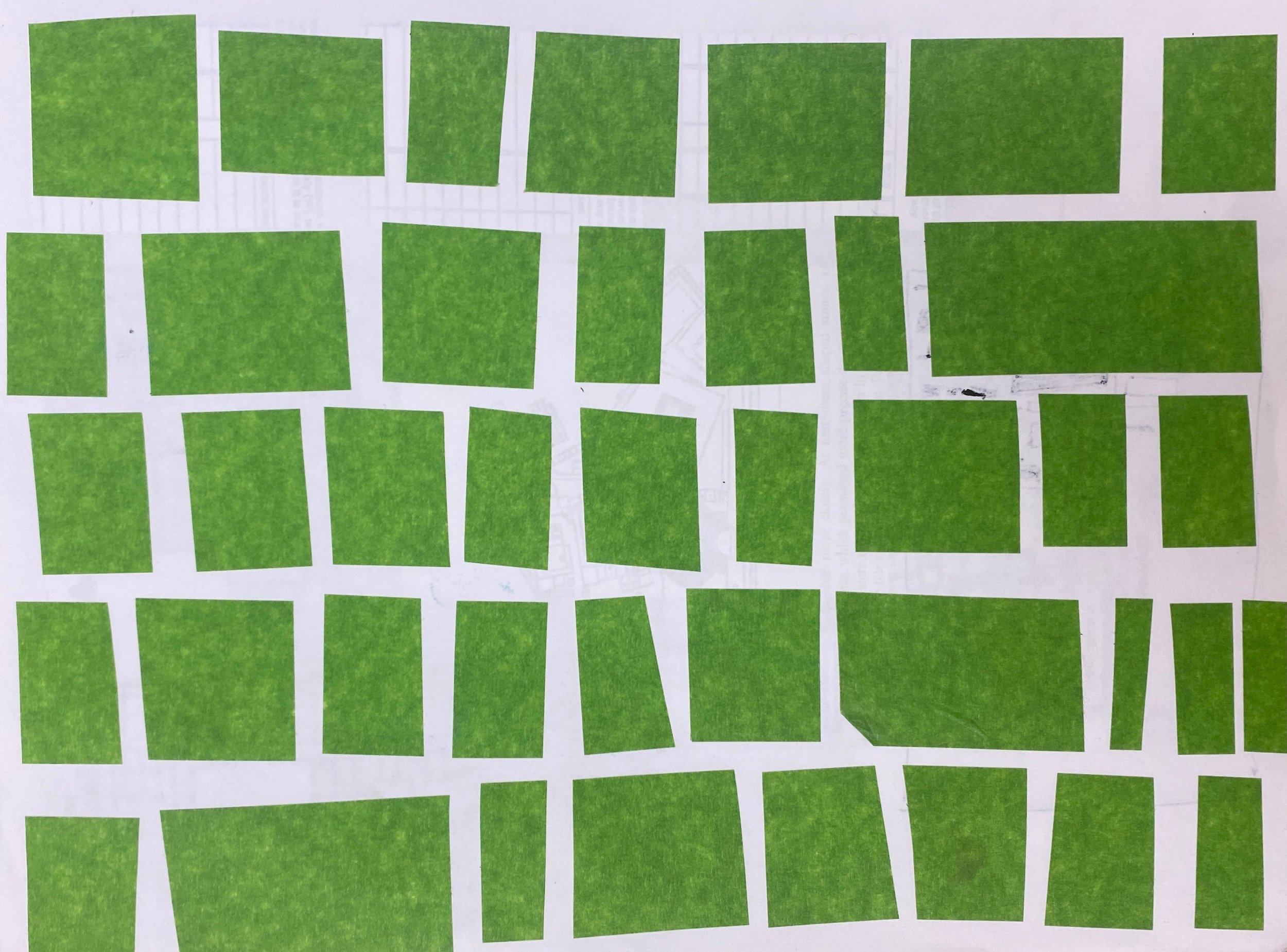
What’s a non-negotiable for your creative workspace?
My workspaces have changed so much over the years from my bed, to kitchen counters, to the floor by kids’ cribs, to now sharing an art studio space with my children and husband. I am definitely flexible with where I work! My professional workspace is also an art studio and so I am often transporting projects back and forth between two spaces.
That said, if I had to pick a non-negotiable, I would probably say that light is one factor that comes up again and again for me. As I get older, my eyesight is not as great as it used to be. I am happiest when I am working in natural light and/or in a well-lit space.
The other issue that keeps coming up for us is storage and organization. Two years ago, we bought most of the art classroom from a school that closed in our town. As a result, we have TONS of art supplies. Managing these supplies in such large quantities has been a challenge. I’m not sure we have this figured out yet given that we have four people using the space and lots of different media in use!

What would you create with flowers & florals if you had unlimited resources?
I would love to turn part of our home into a solarium to bring the outside in. The winters are long in the northeast! I’d also love to have fresh flowers in my home weekly.
I would also love the time and resources to make more crafts with vintage Czech millinery as I have in the past, and I’d explore different forms of floral design (beyond Europe and Japan).
What advice would you share with others who are beginning to develop their creative styles and find their own way?
Creativity is a lifelong venture. At different times in my life I have felt more creative and at other times, I have had to let regular life take over. Sometimes my professional life is extremely creative, and sometimes I just need to “get the job done.”
Being creative, making art, and expressing yourself can manifest in many ways—projects with children, crafts at home, or a full career in which you just make, make, make. My advice is to not worry if you are in a slump, or if you feel that your creativity is too commercialized, or if you don’t have a creative outlet at the moment. When we stop worrying, that’s when creativity thrives.
Also, if anyone wants to hate on what you make? Remember it takes courage to put your work out there. Hating is for cowards. Making is brave. Also, *&%$# them.
Handpicked
A few of Allyson’s favorites…
Favorite flower
Poppy Orientalis
Runners-up: hollyhock, foxglove, Chinese lantern, beebalm, Indian paintbrush, lupin, & scabiosa
Favorite season
Autumn
Current style inspiration
Beatrice Wood, Molly Ringwald in Pretty in Pink, Iris Apfel, Mary Kate Olsen (don’t judge), Stevie Nicks, Carol Burnett in Annie, Angelica Huston, Frida Kahlo, Harry Styles, and Helena Bonham Carter.
Also: Emilie Floge, who was a groundbreaking fashion designer and muse of Gustav Klimt! I’m obsessed with her.
Current color obsessions
Green, red, and neon green combined with yellow.
Your last great read
Fiction: House of Leaves by Mark Danielewski and an amazing little book I should have read long ago, On Beauty and Being Just by Elaine Scarry. I am reading a lot these days, although not much of it is fiction!
Hobbies & activities
Spending time with my kids and family, painting, drawing, crafts, hiking, travel, and going to museums and seeing performances.
Favorite botanical destination
The Ware Collection of Glass Flowers at Harvard, the New York Botanical Garden Orchid Show, the Japanese Tea Garden in San Francisco, the garden at the Cloisters Museum in NYC, the Riverbanks Botanical Garden in Columbia, South Carolina, and the Desert Botanical Garden in Scottsdale, Arizona.

Favorite floral patterns
In art & design
Basically every pattern in the Dover book Treasury of Art Nouveau Design & Ornament, which I copied over and over in high school. Same with Dover’s Art Nouveau Floral Patterns & Stencil Designs and Julianna Kunstler’s Art Nouveau Patterns book. They are fairly dreamy. In my dream, I’m the woman in the Alphonse Mucha Bières de la Meuse poster daydreaming with a beer, listening to Fleetwood Mac. She should be wiping down the bar, but isn’t there a bar boy to do that kind of work for her? Not to beat a dead horse, but I also loved Beardsley’s The Climax illustration, like most angry teenagers. See! There’s a flower down there, haha.
The red wallpaper in Henri Matisse’s Red Room
The Unicorn in Captivity floral pattern on the medieval tapestry at the Cloisters Museum in NY
In fashion & textiles
Most vintage Gunne Sax prints, especially when they’re mixed & matched
Liberty of London prints, specifically the trippy weird ones
Giant ‘70s, splotchy floral prints
Geometric kimono fabric florals
Marimekko’s Unikko pattern
In architecture
When you get up close to the Taj Mahal, you can see all these amazing floral patterns that are made from semi-precious stones. It’s unreal! The detail is amazing.
The Blue Mosque in Cairo
In folklore
Scandinavian folkloric patterns with tulips
German Edelweiss patterns
Mexican otomi patterns
Thank you so much, Allyson!
Image credits: Allyson Montana
You may also like…
More interviews with floral-inspired artists & designers who are blooming in creative directions
Artist - Chicago, Illinois
Gardener & designer - Potomac River, West Virginia
Flower farmer & florist - Sonoma County, California
We respect your privacy, and when you click “Sign Up,” you are confirming that you agree that information you submit will be protected and used as permitted in our privacy policy and terms. If you do not agree to any of these terms, you may not submit this form.




